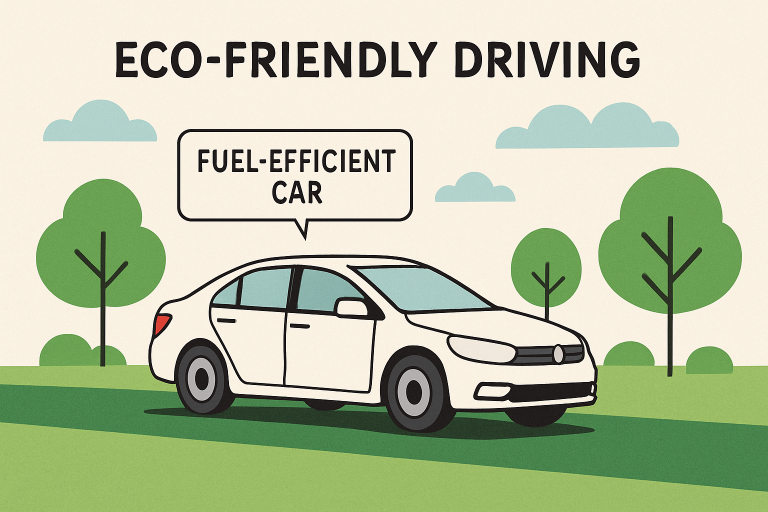Eco-Friendly Driving Habits for a Modern Lifestyle

Table of Contents
- 1 Overview of Eco-Friendly Driving
- 2 Smart Driving Techniques
- 3 Regular Vehicle Maintenance
- 4 Choosing Fuel-Efficient Vehicles
- 5 Alternative Transportation Options
- 6 Eco-Friendly Driving Technologies
- 7 Financial Incentives for Green Driving
- 8 Final Thought: Driving Change Through Everyday Sustainable Choices
Overview of Eco-Friendly Driving
Embracing eco-friendly driving habits is not only an effective way to minimize your environmental impact, but it also aligns perfectly with a modern, conscious lifestyle. As people become increasingly aware of their ecological footprint, adopting green practices on the road can yield both environmental and financial rewards. For those seeking to upgrade their vehicles to more efficient models that support these habits, learn more about the latest eco-friendly cars available on the market.
Simple adjustments to daily driving routines can contribute significantly to cleaner air, reduced greenhouse gas emissions, and long-term savings. By prioritizing efficiency, exploring innovative technologies, and making thoughtful choices, drivers can become part of the solution to the climate crisis.
Smart Driving Techniques
Smart driving habits can improve efficiency and reduce emissions. Avoiding aggressive acceleration and harsh braking lowers fuel consumption and prolongs vehicle components’ lifespan. Consistent, gentle driving in stop-and-go situations can improve fuel economy by up to 40%. Cruise control on highways can maintain a steady speed. Avoid aggressive driving, minimize idling during extended stops, and use cruise control on flat roadways for better mileage results. Preparing for road events and avoiding aggressive driving can also improve fuel efficiency.
Regular Vehicle Maintenance
Maintaining your car’s optimal condition is crucial for its efficiency and reducing emissions. Regular maintenance tasks include checking tire pressure, replacing air filters, and using the recommended motor oil. Underinflated tires can reduce fuel efficiency, so it’s essential to check tire pressure monthly and before long trips. Regular air filter replacement improves engine airflow, leading to efficient combustion and reduced emissions. Choosing the right motor oil can also lower engine friction, potentially increasing fuel efficiency by 1-2%.
Choosing Fuel-Efficient Vehicles
When shopping for a new car, prioritize those labeled as fuel-efficient or EPA SmartWay-certified. These vehicles incorporate advances like lightweight materials, enhanced aerodynamics, and sophisticated engine management systems that work together to lower energy usage and decrease pollution. You can find detailed fuel economy information through resources like the EPA’s Green Vehicle Guide.
Alternative Transportation Options
To reduce your carbon footprint, consider incorporating public transit, carpooling, cycling, or walking into your routine, especially for short urban trips. Public transportation reduces traffic congestion and emissions, while carpooling reduces gasoline usage and per-person emissions costs. Cycling or walking also supports your health by reducing vehicle emissions and avoiding nearby destinations.

Eco-Friendly Driving Technologies
Automakers are introducing advanced technologies to promote greener driving in their vehicles. Start-stop engines conserve fuel during traffic waits, while regenerative braking captures kinetic energy lost during braking, particularly in hybrid and electric cars. Specialized low-rolling-resistance tires also optimize fuel economy. Start-stop systems limit wasted fuel during idle periods without driver intervention, while regenerative braking improves system efficiency in hybrids and EVs. Low rolling resistance tires reduce energy loss as tires roll, lowering fuel use.
Financial Incentives for Green Driving
Governments and insurers are increasingly promoting eco-friendly transportation through tax credits, insurance discounts, and HOV lanes. These incentives make green technology more accessible, with insurance companies offering policy discounts for low-emission vehicles. Additionally, some regions grant access to HOV lanes for qualifying vehicles, reducing daily drive times. These financial incentives offset upfront costs for eco-friendly vehicle purchases, and some areas offer HOV lane access for more efficient commuting.
Final Thought: Driving Change Through Everyday Sustainable Choices
Sustainability doesn’t stop at the wheel—it’s a lifestyle choice that carries through every aspect of daily living. By conserving energy at home, reducing waste, and supporting sustainably made products, you amplify the positive impact of eco-friendly driving. Each small decision adds up, reinforcing a commitment to both environmental responsibility and long-term savings. When combined with mindful vehicle choices, these habits reflect a modern lifestyle rooted in purpose and progress. Your efforts today help pave the way for a cleaner, more conscious tomorrow—for your community and generations to come.






